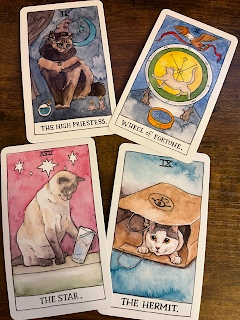Incorporating Oracle Cards into Your Tarot Practice

What's an Oracle Card? Simply stated, an Oracle Card is a divination tool in card form that provides insight or guidance regarding one's actions and/or future direction. They can be used within Tarot readings to provide additional information and insight, but they are truly their own entity and their purpose and role is not always well understood by beginning Tarot students. "Sounds cool," I hear you saying, "but what makes an Oracle deck different from a Tarot deck?" Well, the primary difference is that a Tarot deck is built around a known system of reading (with slight variations) and an Oracle deck has its own built-in method of reading. Remember that a standard Tarot deck has 78 cards (through some decks will differ) and have the same general format - Major Arcana, Aces through 10s, Court cards, etc. An Oracle deck can have an many or as few cards as the creator desires. I own Oracle decks that range from over 200 cards to 21 (and everything in between)....




